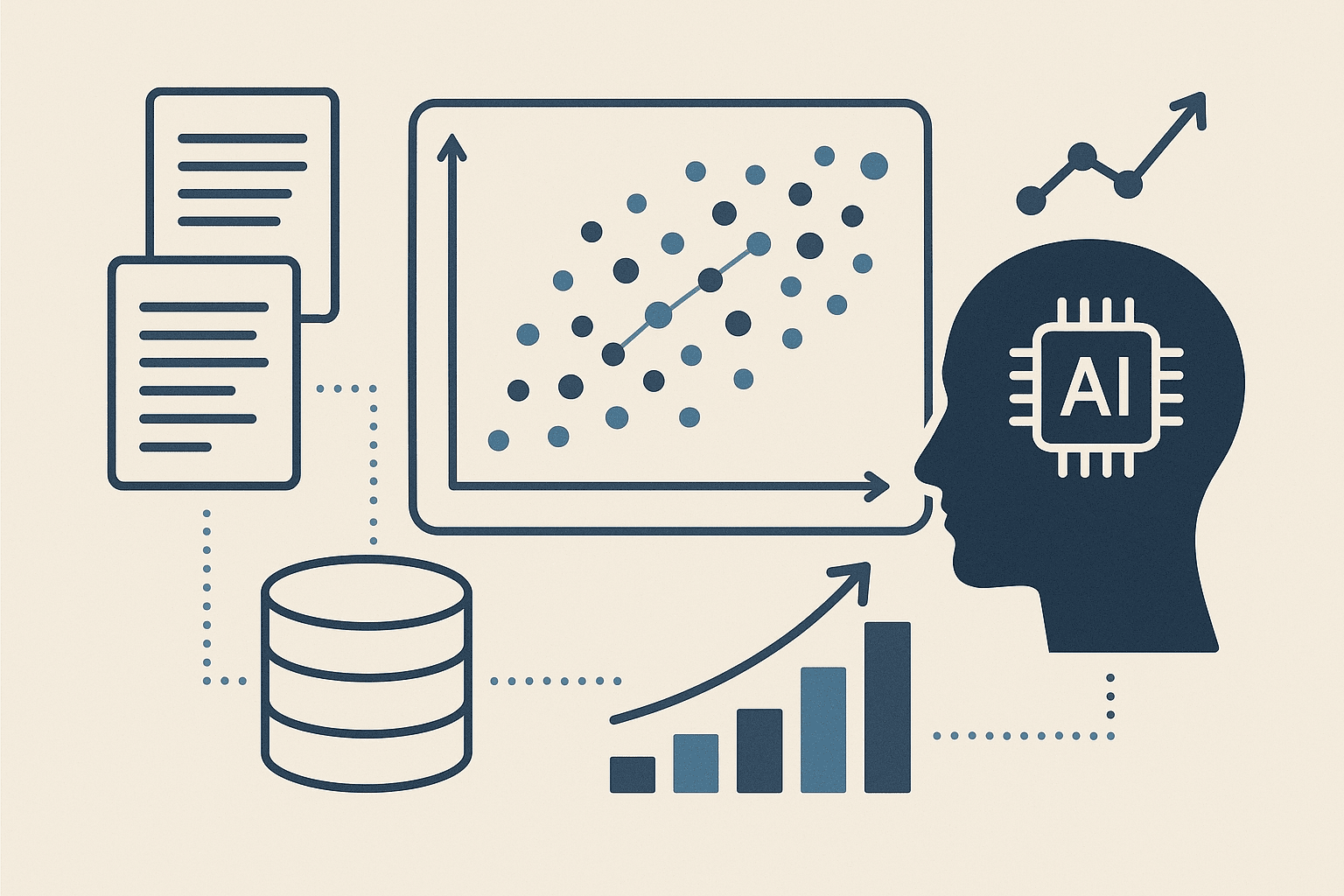The challenge: to exploit the majority of dormant data
In most organizations, more than 70-90% of the data Are said unstructured : office documents, PDFs, emails, emails, support tickets, customer feedback, presentations, etc.
This data contains considerable business value but escapes the traditional tools of Business Intelligence or to relational data warehouses.
THEArtificial intelligence, and in particular the embeddings templates, offer a robust method for integrating this data into decision analysis.
Embeddings AI: definition and specificity
One Embedding Is a vector representation generated by a Machine Learning model (neural network).
AI transforms a text or document into a high-dimensional vector that captures relationships semantics rather than just lexical.
👉 Example: two different sentences, “the laptop does not hold a charge” and “my laptop has poor battery life”, will be similar in vector space because they express the same idea.
It is precisely this AI's ability to encode meaning which allows uses that are impossible with traditional statistical methods.
Concrete applications of AI embeddings
- Semantic search
- Going beyond keyword research.
- Identify documents or customer feedback expressing the same problem with different formulations.
- Clustering and detection of emerging themes
- Automatically group similar content.
- Detect weak signals or recurring trends in massive volumes of feedback.
- RAG (Retrieval-Augmented Generation)
- Feeding a LLM (Large Language Model) with the relevant documents found via embeddings.
- Allow natural language interactions with internal data, without training the model from scratch.
An advanced approach: linking SQL data and unstructured data
One of the most promising uses is to combining structured and unstructured data via embeddings.
- Structured side : sales, financial KPIs, ERP or CRM data.
- Unstructured side : customer feedback, support tickets, PDF reports, internal reports.
Thanks to AI embeddings:
- Customer returns can be automatically linked to the products or services concerned.
- Qualitative trends (complaints, suggestions) can be linked to quantitative indicators (turnover, churn, satisfaction).
- Teams get an enriched vision that is no longer limited to What happened, but which highlights Why did this happen.
⚠️ Note: this analysis highlights correlations, not strict causalities. It should be used as a decision support tool, and not as definitive proof.
Technical implementation
- Data collection : extract unstructured documents and identify the keys to join with structured data (product, customer, period).
- AI vectorization : generate embeddings via a specialized model (OpenAI, Cohere, HuggingFace).
- Storage in a vector base : Pinecone, Weaviate or FAISS for fast and scalable research.
- Smart joint : associate each vector with the relevant structured data (SQL/ERP).
- Exploited by an LLM : use a language model to summarize, analyze, and deliver insights in natural language.
Profits observed in business
- Exploitation of dormant data : transform the documentary mass into decision-making assets.
- Reduced analysis time : automate tasks that would require weeks of a junior analyst.
- Improving responsiveness : quickly identify customer problems before they impact key indicators.
- Augmented decision : dashboards no longer just show numbers, but link quantitative and qualitative relationships.
Conclusion
Les AI-generated embeddings constitute an essential technological building block to overcome the limits of traditional BI. By connecting structured and unstructured data, they enable holistic analysis, both quantitative and qualitative, which enriches strategic decision-making. This approach, which is still not very widespread, now represents a competitive advantage for companies that are able to implement it effectively.
